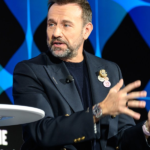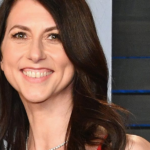Special purpose acquisition companies, or SPACs, were big business in 2021 when everyone from lifestyle mogul Martha Stewart to politicians like Paul Ryan was investing in them. Also known as blank check companies, SPACs offered firms a back door route to becoming a public company by getting acquired by a shell company. But the 2021 trend didn’t last long as more than 60% of blank check companies from that year couldn’t complete a merger and had to return money to investors, giving SPACs a dodgy name in the process. Now, blank check companies have returned, but this year’s crop is a different breed. The celebrities are gone, the buzz has faded, and many SPACs are coming from serial sponsors who are, well, just a little dull.
So far in 2025, 61 blank check companies have gone public, raising $12.4 billion as of June 26, though it’s hard to assess their success since it typically takes months for a SPAC to complete an acquisition. This compares to just 16 SPACs for the same period last year that collected $2.5 billion, according to Dealogic. So far none of this year’s deals have found a merger partner.
The $12.4 billion is the most raised by blank check companies since 2021, when the SPAC market was on fire. That year, a record 613 blank check companies went public, raising about $162.6 billion in proceeds.
SPACs are enjoying “a bit of a revival,” said Ben Kwasnick, founder of SPAC Research. Blank check companies are on track this year to raise $25 billion, a nearly 85% drop from 2021, but a total Kwasnick thinks is more sustainable. “There’s still huge demand for the SPAC market,” he said.
Still, some investors of 2021 SPACs were able to get their money back. There were many blank check companies in 2021 chasing a small number of acquisitions, said Stephen Ashley, a partner with law firm Pillsbury Winthrop Shaw Pittman. When they couldn’t complete a merger before their deadline, the SPACs were forced to liquidate. Some investors also redeemed their shares before the blank check company completed a merger. Both groups got their money back, Ashley said. “A large number of these investors may be willing to consider investments in another round of SPACs with more seasoned sponsors,” he said.
Of course, some 2021 investors held onto their shares after a SPAC completed its merger with a business and ended up owning stock in the surviving entity, though many of them likely lost money. Most deals that closed in 2021 are trading below $10, the price that SPACs typically price at, said Kwasnick of SPAC Research.
“These investors will be more wary,” Pillsbury’s Ashley said.
“It’s encouraging to see serial sponsors doing most of this year’s IPOs, as they’re likely more realistic about their prospects than first-time sponsors are,” said Kwasnick.
Citi and UBS were No. 1 and No. 2 in terms of SPAC underwriters in 2021. Neither bank completely exited the SPAC market, but both pulled back significantly. Citi worked on 113 deals in 2021, giving it bragging rights as the top SPAC banker. This year, Citi has only two SPACs to its credit. UBS has worked on one or two blank check transactions every year since 2021 when it underwrote 92 transactions. This year, UBS has only worked on one SPAC.









